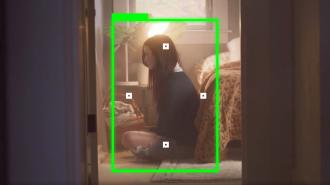When law enforcement seeks to identify the suspects and victims involved in sexual exploitation cases, sometimes the only lead is an image. Many such cases go unsolved. But over the past decade, facial recognition technology has helped solve more cases by enabling law enforcement to quickly connect names to images extracted from all types of content.
Facial recognition technology has existed in various forms since the 1960s. But only recently has it achieved a level of sophistication where it’s possible to identify a person through a single facial image — even one that’s grainy or taken from an off angle — by comparing it to the billions of facial images that exist online.
This is the capability provided by Clearview AI. Founded in 2017, the facial recognition company offers law enforcement agencies access to a database containing more than 20 billion facial images collected by publicly available means, such as images people upload to open or public Facebook, Twitter, and Instagram accounts.
It’s been a game-changer for law enforcement officials working human trafficking cases.
“When you’re dealing with child exploitation, a lot of times the only thing we have is the face of a child,” Kevin Metcalf, President and Founder of the National Child Protection Task Force told Freethink. “When Clearview came along, that allowed us to search and identify who they are, where they are. […] I can attest for hundreds of kids who were identified using facial recognition technology.”
A new window into human trafficking
A case from Nevada offers an example. Law enforcement had received a tip that a woman featured on an escort website was underage. In terms of verifying the tip, the main problem was that the woman’s personal information on the website was fake. But the photos were real.
“We were able to take one of the photographs from one of these online escort websites, upload it into Clearview, and, within seconds, Clearview was able to identify that individual,” Chris Johnson, a detective who is part of the Regional Human Exploitation and Trafficking Unit in Reno, Nevada, told Freethink. “It was a 16-year-old female juvenile who was being sex-trafficked. We were able to get her immediately recovered, out of the life, surrounded by resources, and her trafficker is currently sitting in prison.”
The US State Department estimates that there are 24.9 million victims worldwide at any given moment. The vast majority are women and children, but human traffickers prey on people of all ages, backgrounds, and nationalities.
For law enforcement agencies working to thwart human trafficking, the challenge is identifying not only the perpetrators, but also the victims. After all, the dynamics of sex trafficking can be complex. Victims are often too ashamed, fearful of law enforcement, or psychologically dependent on their trafficker to try to start a new life. In some cases, victims simply have nowhere else to go.
“I lost my job and I had no place to live,” said one human trafficking victim in a report conducted by researchers at the Office of Sex Trafficking Intervention Research (STIR) at Arizona State University. “I didn’t have money to support myself to keep myself alive.”
Thanks to the proliferation of publicly available online photographs, facial recognition technology has opened new interventions for victims of human trafficking. But how does it work?
The next generation of facial recognition technology
When Clearview AI cofounder Hoan Ton-That began building the company, most facial recognition software was limited by a fundamental problem.
“The issues with the previous stuff — you’d have to get a perfectly aligned face,” Ton-That told Freethink. “If you don’t have a good shot of someone, it becomes a real problem.”
From being unable to process different resolutions and graininess to poor performance in identifying people of varying demographics, it was clear that facial recognition technology needed upgrades.
Clearview AI’s current system is powered by a neural net that converts images into vectors consisting of more than 500 points. These points are based on unique facial features, such as the particular shape of someone’s mouth or the distance between their eyes.
The neural net then clusters images with similar vectors. After uploading a probe image in the system, Clearview AI populates similar image results with a link to where the image is publicly-available online.
The availability of massive amounts of publicly available data d aided Clearview AI to drastically improve the efficacy of its neural network.
“We had this really amazing moment where we were trying a new neural network,” Ton-That told Freethink. “Every single time, it would find the right person — different angles with masks and glasses — and that’s when I realized we made the huge breakthrough in terms of accuracy. We’re 99 percent accurate across all demographics.”
Applying facial recognition in the real world
Clearview AI originally didn’t want to sell access to its system to governments, Ton-That told Freethink. It’s easy to envision how facial recognition technology can go wrong. In addition to concerns over privacy and abuse by governments, facial recognition systems that produce false identifications could potentially lead to wrongful arrests.
But after achieving an unprecedentedly high accuracy rate, Clearview AI decided that equipping law enforcement with access to its technology would produce a social net good, particularly because it would greatly improve agencies’ ability to identify and save people involved in human trafficking. After all, the content in which these people appear often exists with a fake name or no other data attached to the victims and perpetrators.
With Clearview AI, law enforcement agencies can shine a light on the darkest places of the internet, putting names to victims and offering them a chance at a new life.
“Once officers started getting access to the technology, the word spread so fast,” Jessica Garrison, head of Government Affairs at Clearview AI, told Freethink. “Being able to take an unidentified child that’s being abused online and determine who they are, that’s a needle in the haystack.”






